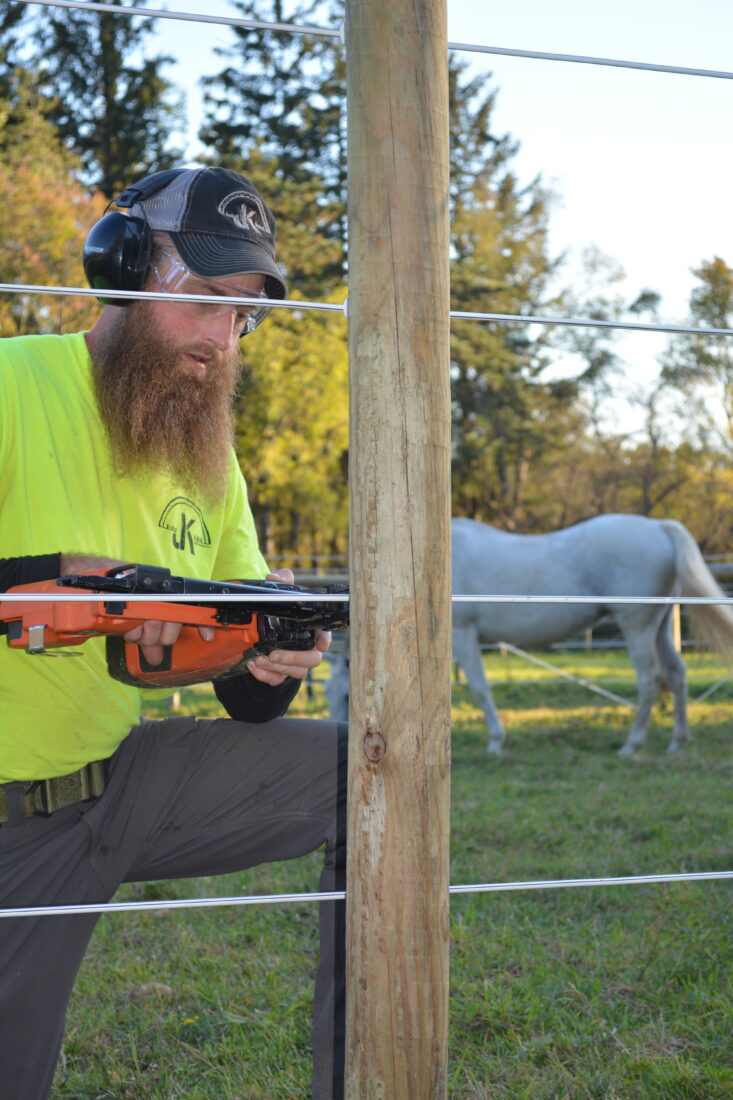HOW LONG SHOULD A QUALITY AGRICULTURAL FENCE LAST?
A quality fence can last at least 20 years or more. With the treatment technology and the advancements with other materials, fence longevity has increased. There are a variety of items that might impact the life of a fence, however, these are items that can and should be discussed prior to construction.
WHAT PART OF AN AGRICULTURAL FENCE IS GENERALLY CONSIDERED THE WEAKEST POINT?
The weakest point of a fence is typically found at the bracing. A typical failure we notice is an improper post size (using inadequate material) that might cause a post to break or heave. There are several items to consider such as post diameter and length, the ability for the posts to sustain the load that is being placed on them and the depth they are put in the ground. Lastly, how they are installed (driven versus augured) among other items might impact the strength of the corners.
“The most important step is to consider what the fence is being used for and then consider the materials and purpose.”
Kyle Stender
WHEN YOU APPROACH AN AGRICULTURAL FENCING JOB, WHETHER IT IS A QUALITY REPAIR OR A NEW FENCE, WHAT INSTALL PRACTICES HELP EXTEND A FENCE’S LIFETIME?
The most important step is to consider what the fence is being used for and then consider the materials and purpose. It’s important to remove or replace any defective or damaged sections/pieces and then determine if repairs can be adequate and comparable to a new fence.
IS IT WORTHWHILE REUSING/REPURPOSING MATERIALS FOR REPAIRS OR NEW FENCE INSTALLS?
It can be worthwhile (depending on the age and assessing for any significant damage). Reusing materials can be considered, however, the integrity of the posts or wire should be considered while anticipating the remaining “life” of those materials and the cost of installation. Another consideration is that many items tend to degrade or break down from weather elements around the same rate, therefore if you are only replacing a portion of a fence such as the wire or hardware, the posts for example might need to be replaced again before the other items. It may be more cost-effective long term to replace several or all items at the same time or in the same section depending on the above-mentioned factors.
HOW IMPORTANT IS THE PHYSICAL QUALITY OF FASTENERS IN ENSURING THE INTEGRITY AND LIFETIME OF A FENCE?
A fence is only as strong as the weakest link, and fasteners are an incredibly important aspect of the fence. They ensure the wire is secured properly to the posts and depending on the fence type, also allows the wire to move/expand with the fence. For example, in agricultural fencing, selecting quality staples and installing them correctly will lead to increased integrity of the fence.
WHY IS THE WAY A STAPLE IS INSTALLED IMPORTANT?
If a staple isn’t driven to the proper depth (too far, not deep enough), it can damage the wire or not allow for the expansion and contraction of the fence based on weather elements. If that isn’t taken into consideration, the integrity of the fence can be compromised. Power-driven staplers with depth adjustment can deliver consistent results on the fence line.
Kyle Stender is the Owner/Operator of J&K Agriculture Inc, in Western New York, and Stockade ambassador.

